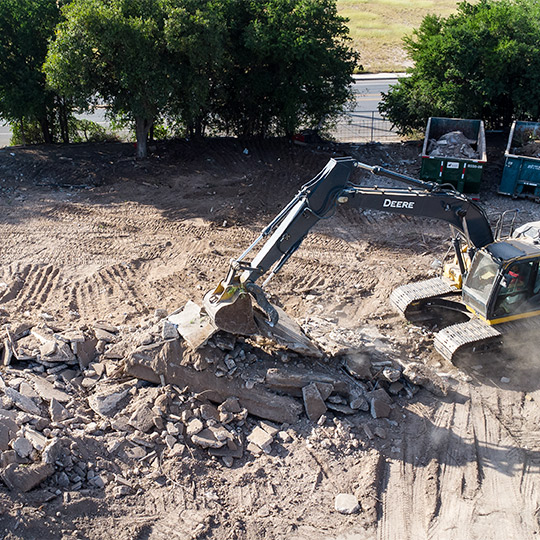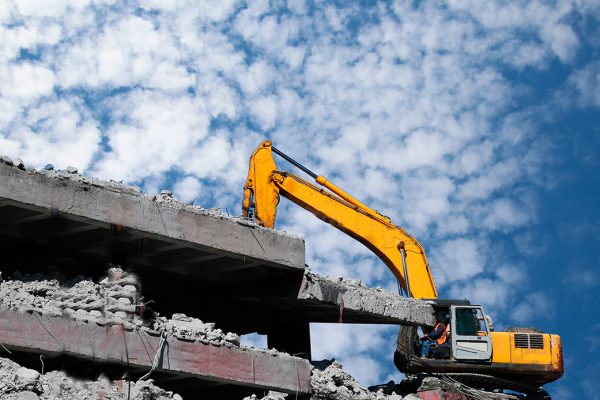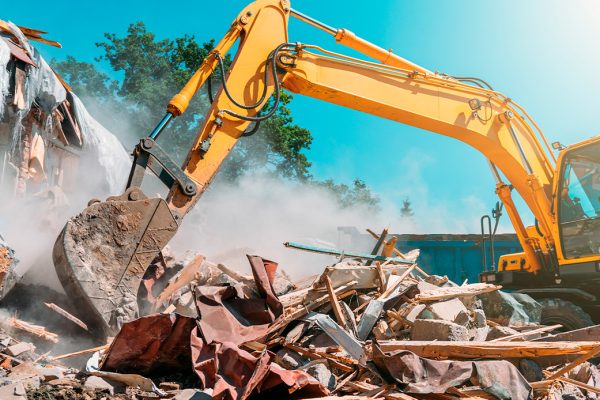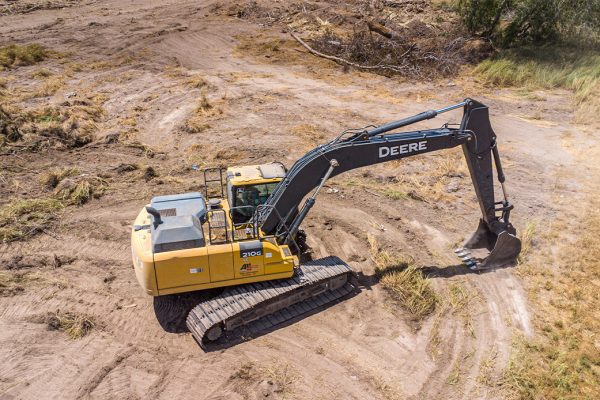If you’re thinking about tearing down all or part of your home, you’re in good company. Many homeowners love their neighborhood but find themselves stuck with an aging, cramped, or compromised home. And for those dreaming of a fully customized home, one built around how you want to live, residential demolition can be the first exciting step toward that transformation.
At Liongate Builders, we see demolition not just as removal, but as clearing the way for something better: a home tailored to your vision, built with longevity, craftsmanship, and innovation at its core.
To help you understand the demolition process, from permits and safety precautions to cost expectations and what happens afterward, this home demolition guide walks through everything.
Why Homeowners Choose Demolition
Many people initially assume home renovation is easier, but demolition often makes more sense. If your home has structural issues, extensive water or foundation damage, outdated layouts, or costly renovation needs, starting over can be the more economical (and more liberating) option.
If you want a truly modern layout that is fully modern, customized, and thoughtfully designed, tearing down can open the door to a home that reflects quality, long-term durability, and architectural innovation.
Types of Residential Demolition
When it comes to demolition, you have options. The right one depends on your goals.
Total demolition is the simplest to picture. It removes the entire structure and often the foundation too. This is the standard approach if you want a blank canvas for a new build.
Selective demolition removes only certain areas while leaving other parts intact. This approach is frequently used during large renovations or expansions. This method requires precision, but it can save both time and materials if there are parts worth keeping.
Then there’s deconstruction, the most careful method of all, where the home is taken apart piece by piece so materials like wood flooring, fixtures, and even bricks can be salvaged. It requires more time, but it aligns well with homeowners who prioritize sustainability, craftsmanship, and thoughtful resource use.
Understanding the Demolition Process
The demolition process doesn’t actually begin with demolition. It starts with assessments and planning. Homes, especially older ones, may contain asbestos, lead paint, or other hazardous materials that need to be handled by licensed professionals. Your contractor will also want to understand utility locations, structural integrity, and the overall project scope.
Once that planning is done, the permitting phase begins. Nearly all localities require demolition permits, and they typically ask for:
- Site plans
- Proof that utilities have been disconnected
- Hazardous material inspection reports
- Permit review times vary, so it’s wise to begin early.
With permits approved and utilities safely disconnected, demolition day arrives. Mechanical demolition, using excavators, is the most common approach and, for an average home, often takes only one to two days. Deconstruction takes longer, usually one to three weeks, because every component is removed intentionally rather than quickly.
After the structure comes down, debris is sorted and hauled away. A surprisingly large amount can be recycled, especially wood, metal, and concrete. Once cleared, the soil is graded so the site is ready for rebuilding or whatever comes next.
For our clients, this is the point where the excitement really begins, because now we shift toward designing the next chapter of your home.
Permits and Safety: The Not-So-Exciting but Absolutely Essential Part
 Permits protect you legally, financially, and structurally. Cities want to ensure utilities are safely capped, hazardous materials are handled correctly, and the work is done by licensed professionals. If your home is older, you may even need historic review clearance.
Permits protect you legally, financially, and structurally. Cities want to ensure utilities are safely capped, hazardous materials are handled correctly, and the work is done by licensed professionals. If your home is older, you may even need historic review clearance.
Safety protocols on-site are also non-negotiable. Workers need proper protective equipment, the property must be fenced off, dust should be controlled with water spray, and emergency procedures must be in place. If hazardous materials are present, certified abatement crews must remove them before demolition begins.
When you work with us, we coordinate these steps for you, ensuring your project is compliant, protected, and handled with the highest standards of quality assurance.
Managing Waste and Debris
Demolition creates a surprising amount of debris, sometimes thousands of pounds of it. Good contractors will recycle what they can, including concrete, bricks, metals, and sometimes wood. Waste disposal is typically handled through large roll-off dumpsters and scheduled pickups.
If you’ve chosen deconstruction, you may even be able to donate salvaged materials to organizations like Habitat for Humanity and potentially qualify for tax deductions. Our team prioritizes recycling and sustainability wherever possible, aligning with clients who value long-lasting, environmentally conscious construction.
Cost Expectations for Home Demolition
Demolition costs vary depending on size, complexity, location, and the method your contractor uses. Traditional mechanical demolition generally falls between $4–$12 per square foot, while deconstruction sits higher, typically $9–$20 per square foot, because it requires significantly more time and labor.
Other expenses include hazardous material removal (often $2,000–$6,000), permit fees ($100–$450), and waste disposal. Some homeowners also opt to remove or replace the foundation, which adds further cost.
On average, homeowners spend around $10,000–$25,000 on a full residential demolition, but larger or older homes can reach beyond that.
When you work with Liongate Builders, we walk you through each cost category so you always know exactly where your investment is going and how it aligns with the long-term quality and customization you expect.
Pre-Demolition Checklist for Homeowners
 Before any machinery rolls in, a little preparation goes a long way. Think of this as your “calm before the (intentional) storm” checklist. It helps keep your project running smoothly and avoids last-minute surprises.
Before any machinery rolls in, a little preparation goes a long way. Think of this as your “calm before the (intentional) storm” checklist. It helps keep your project running smoothly and avoids last-minute surprises.
Here’s what to tackle before demo day:
- Confirm your permits are approved: Not submitted, but approved.
- Schedule utility disconnections: Gas, water, electricity, sewer, and sometimes cable/internet lines.
- Get hazardous material tests done: Especially if your home was built before the 1980s.
- Remove personal items: That includes sheds, décor, appliances, furniture, sentimental items, patio pieces — anything you want to keep.
- Photograph the site: Helpful for insurance records and before-and-after comparisons.
- Protect what’s staying: Trees, fences, driveways, or neighboring structures may need temporary barriers.
- Let your neighbors know: It’s a courtesy that can save you complaints (and delays).
- Parking plan: Move cars, boats, trailers, and RVs out of the work zone.
- Check with insurance: Ask what’s covered during demolition.
Think of this checklist as your “pre-flight safety check” before takeoff. Once these items are handled, everything goes much more smoothly.
How Long Does Residential Demolition Take?
Demolition happens quickly, but the preparation often takes longer than homeowners expect.
Here’s a realistic timeline:
1. Pre-Demo Phase (1–4 weeks)
This is where most of the time goes. Permits, utility shutdown scheduling, and hazardous material inspections often take longer than the demolition itself. Cities work on their own timelines, and utility companies don’t always move fast.
2. The Actual Demolition (1–3 days)
Mechanical demolition can be shockingly fast. A small home often comes down in a single day.
Selective demolition or deconstruction, however, stretches to 1–3 weeks since materials are carefully removed rather than simply taken down.
3. Debris Removal & Site Grading (2–7 days)

Once the structure is down, dumpsters fill up fast. Debris is sorted, hauled away, concrete is broken up, and the soil is graded.
What Causes Delays?
- Rainy or windy weather
- Permit office backlogs
- Late utility disconnections
- Hidden hazardous materials
- Environmental rules
- Unexpected structural issues
Delays can stem from weather, city backlogs, utility companies, or unexpected materials. We proactively manage all these things for you.
What Happens After Demolition?
Once the dust settles, your lot becomes a blank canvas for the next phase. Whether you’re ready to build a fully custom home, create a modern addition, or reimagine your property layout, this is where our relationship truly takes shape.
If you’re rebuilding, we will guide you into the planning phase. If you’re selling the lot or repurposing it, a simple, clean, and level grade may be all you need.
Helpful Demolition Cost and Process Overview
Here’s a quick table to recap the main factors and typical teardown cost ranges:
| Demolition Component | Typical Cost / Notes |
| Full demolition | $4–$12 per sq. ft. |
| Deconstruction | $8–$16 per sq. ft. |
| Hazardous material abatement | $2,000–$6,000 on average |
| Permit fees | $100–$450 on average |
| Dumpster & debris removal | $300–$1,500+ |
| Foundation removal (optional) | $3–$8 per sq. ft. |
| Utility disconnection | Varies; often $1,000–$3,000+ |
How to Prepare Your Property (and Yourself) for Demolition Day
Demolition day is exciting, and a little bit of preparation will keep the whole experience manageable.
- Clear out the house completely: Treat it like moving day. Empty every closet, drawer, attic corner, and backyard shed.
- Disconnect everything: Even after your utility company shuts things off, your contractor may require interior lines to be capped or removed.
- Protect landscaping you want to keep: Flag trees, mark irrigation lines, and use protective fencing where needed.
- Secure the perimeter: Your contractor should install temporary fencing, but you may want “No Trespassing” signs for good measure.
- Move vehicles out of the area: Demolition equipment needs space, and your car does not want to meet an excavator.
Think of this as setting the stage. A clean, organized site makes demolition safer, faster, and far less stressful for everyone involved.
Common Mistakes Homeowners Make During Demolition
Even the most organized homeowners can stumble into demolition pitfalls. Luckily, knowing these in advance will help you avoid them entirely.
- Starting the project before permits are fully approved: This is one of the fastest ways to get slapped with a stop-work order (and fines).
- Hiring purely on price: Cheapest isn’t always safest or legal. A lowball quote usually means corners will be cut.
- Skipping hazardous material inspections: Asbestos and lead can halt a project instantly and lead to expensive remediation if not identified early.
- Underestimating debris volume: Demolition produces a lot of waste. Homeowners are often shocked by how many dumpsters are required.
- Forgetting to notify neighbors: Angry neighbors can cause headaches for you and your contractor, especially in tight neighborhoods.
- Failing to plan for what comes after demolition: Whether you’re rebuilding or selling the lot, your next step needs just as much planning.
When you know the most common mistakes upfront, demolition becomes far less stressful and far more predictable.
Ready to Demolish and Rebuild? Liongate Builders Can Guide You Every Step of the Way
 If you’re considering a teardown, selective removal, or full-site transformation, we’re here to guide you every step of the way. At Liongate Builders, demolition isn’t just the clearing of a structure; it’s the beginning of a deeply personal, fully customized homebuilding experience.
If you’re considering a teardown, selective removal, or full-site transformation, we’re here to guide you every step of the way. At Liongate Builders, demolition isn’t just the clearing of a structure; it’s the beginning of a deeply personal, fully customized homebuilding experience.
We offer:
- Tailored Perfection: Every home we build is uniquely designed around your vision, never duplicated.
- Innovative Designs: Using cutting-edge materials and architectural creativity to craft spaces that last.
- Relationship-Focused Service: Transparent communication and a seamless, enjoyable process from start to finish.
- Quality Assurance: Meticulous craftsmanship backed by over a decade of trusted expertise in the Rio Grande Valley.
If you’re ready to transform your property into a stunning, one-of-a-kind modern custom home built for the way you want to live, we’d love to partner with you. Let’s begin your next chapter beautifully, intentionally, and with craftsmanship that stands the test of time. Contact us today to learn more. Check our portfolio here.





